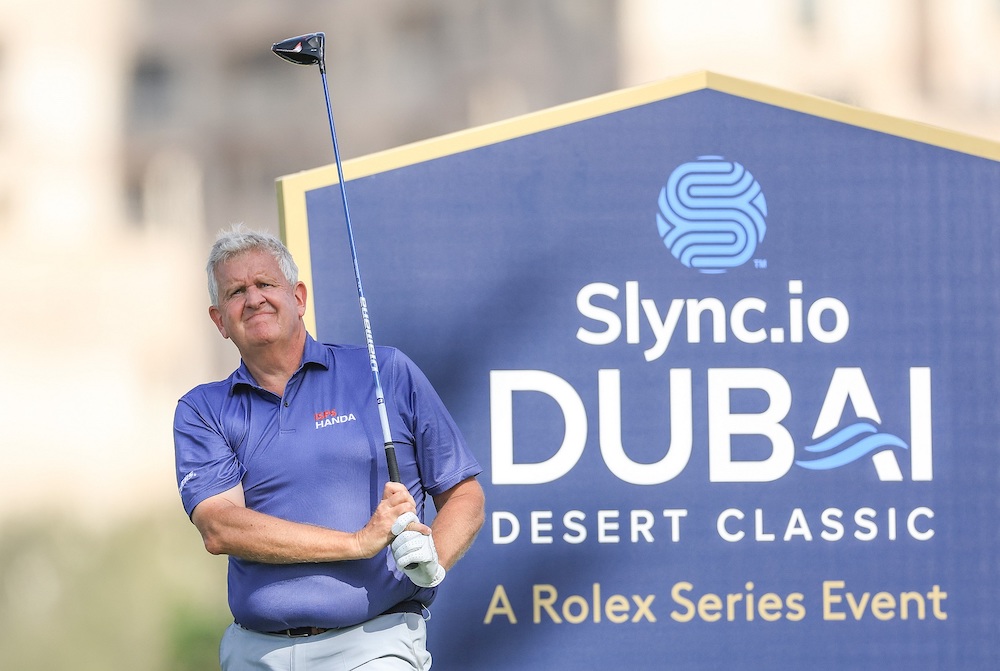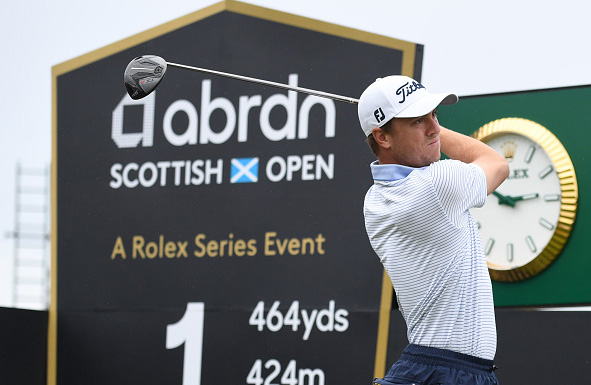
The BMW PGA Championship is a flagship event on the Rolex Series
In January 2022, the DP World Tour (new name for the European Tour) held back-to- back Rolex Series events in the Middle East for the first time. While the Abu Dhabi HSBC Championship has been on the Rolex roster since 2019, the Dubai Desert Classic, a staple on the tour for the last 35 years, was added to the Rolex Series this year for the first time.

Dustin Johnson at the Abu Dhabi HSBC Championship
With a hectic few weeks just concluded by the Tour in the Middle East, India Golf Weekly takes the opportunity to reflect on the impact the Rolex Series has had on prize money and players on the tour.
The European Tour, as it was formerly known, was established 50 years ago in 1972. Given that the Americans have dominated the sport since the 1930’s, and the PGA Tour offered way more money than the European Tour, the latter has always played second fiddle to the PGA Tour. Most European stars played regularly in Europe till the year 2000.

Colin Montgomerie at the Dubai Desert Classic in Jan. this year
Players such as Seve Ballesteros, Bernhard Langer and Greg Norman who all held World No 1 positions also topped the European Rankings in the 70s and 80s. In the 1990s, Colin Montgomerie topped the Order of Merit a record seven times in a row.
Over the last few decades, however, the best players from Europe started moving to the United States because they wanted to compete against the best fields in golf, raise their world rankings and play for the biggest purses. As a result, the European Tour had come to be seen as a stepping stone to the PGA Tour, something Rory McIlroy expressed in so many words a few years ago.
The European Tour decided it had to do something to attract the world’s best back to Europe and so in 2017, The Rolex Series was born. Rolex was a great backer for the series, given the brand’s decades-long involvement with golf in both the men’s and women’s games (Rolex is a partner in all four men’s Majors and all five women’s Majors).

Justin Thomas tees off at the Scottish Open
The series debuted with eight events that offered a minimum of USD $7 million in prize money, roughly two-to-three times more than other tour events. These tournaments offered additional Order of Merit and world ranking points as well.
The idea, as explained at the time by European Tour chief executive Keith Pelley, was to give top European players an incentive to play more often in Europe rather than move to the PGA Tour, while also attracting PGA Tour players to come and play in Europe. Naturally, some of the biggest existing European Tour events were selected to make up the Rolex series. The original line-up included the following tournaments:
- BMW PGA Championship
- Open de France
- Irish Open
- Scottish Open
- Italian Open
The three season-ending limited-field, no-cut events, which were previously known as the Final Series, were also included. These were:
- Turkish Airlines Open
- Nedbank Golf Challenge
- DP World Tour Championship, Dubai
The DP World Tour Championship would also have a larger purse of USD 10 million. To put the change in perspective, the 2016 Scottish Open had a total purse of USD $3.25 million, with the winner, Tyrell Hatton, getting USD $541,668. In 2017, with the total purse now USD $7 million, Rafa Cabrera-Bello took home USD $1,166,669, more than double Hatton’s. The winner’s cheque was now comparable to what winners made on the PGA Tour, a significant incentive for players to enter these events, and therefore retain their European Tour memberships.
In 2019, the Abu Dhabi Championship replaced the French Open in the series but in 2020 the series took a hit because of the Covid-19 Pandemic. The Turkish Open and the Nedbank Challenge were cancelled, while the Italian and Irish Opens returned to being regular tour events. In 2021 only four Rolex Series events were held.
However, that number is up to five in the 2022 season, including the previously mentioned two tournaments in the Middle East, plus the Scottish Open, the BMW PGA Championship and the season-ending DP World Tour Championship, Dubai.
The prize money at these events has also been increased to USD $8 million. That’s why Shubhankar Sharma’s second-place finish in Abu Dhabi earned him 610,736 Euro, over 50% more than the check he took home for winning the Maybank Championship which was part of the European Tour in 2018.
Attracting top players
There’s no question the Rolex Series is succeeding in attracting some of the world’s best golfers to the tour.
In 2019 John Rahm won the DP World Tour Championship. In 2021 current World No. 2 and British Open champion Colin Morikawa won the DP World Tour Championship and became the first American to win the Race to Dubai.
The 2021 Scottish open field included five of the world’s top 10 at time: John Rahm, Justin Thomas, Rory McIlroy, Colin Morikawa, and Xander Schauffele.
In 2022 Rory McIlroy played in both the Abu Dhabi HSBC Championship and the Dubai Desert Classic to start the year. In the latter, McIlroy duelled down the stretch with Victor Hovland, the current World No. 4, who went on to win the trophy in a playoff.
To be sure, the PGA Tour remains the top pro golf tour in the world. But the Rolex Series has clearly raised the profile of the European Tour, and helped it attract some of the world’s best players. The recent injection of $200m into the European tour, and its renaming as the DP World Tour, should build on the gains made by the Rolex Series, and strengthen the tour even further.
Credits:-
Photo – BMW Press


